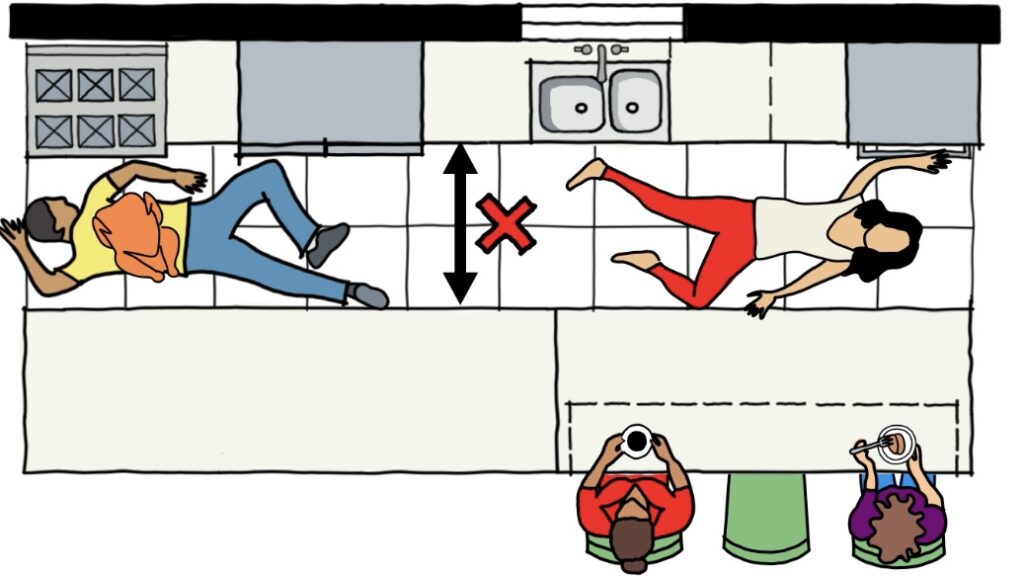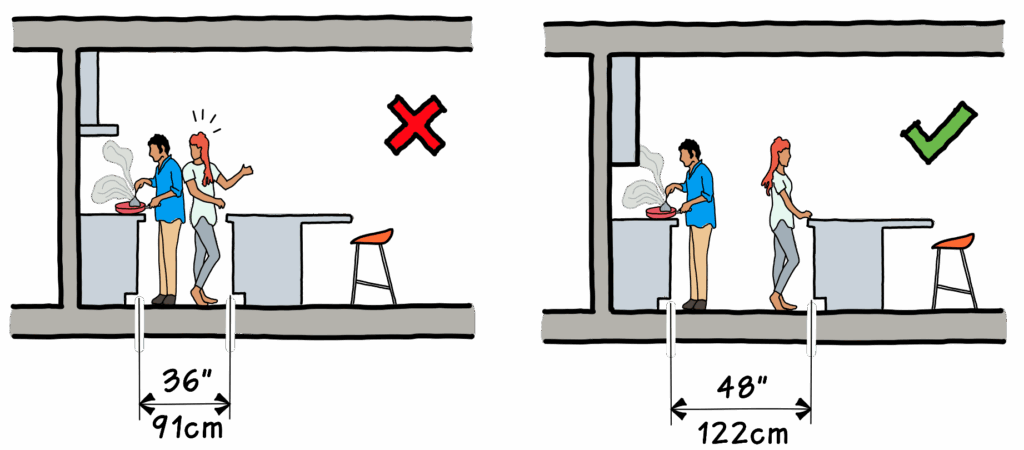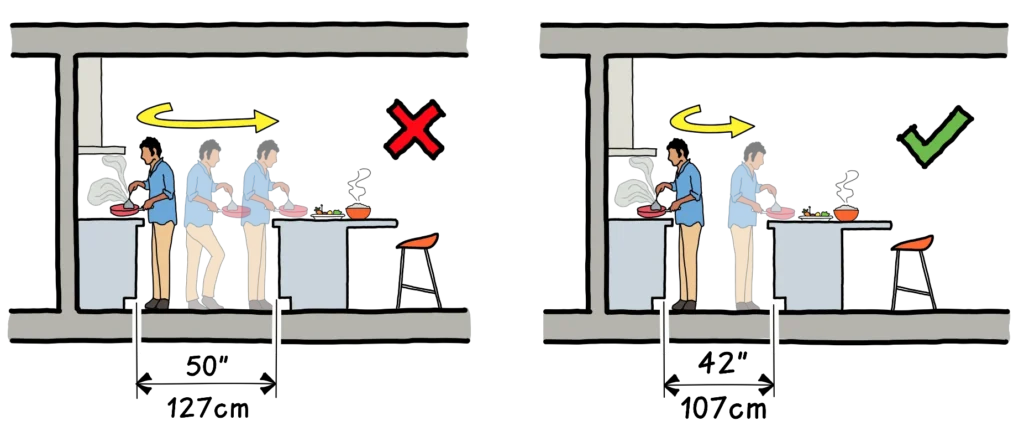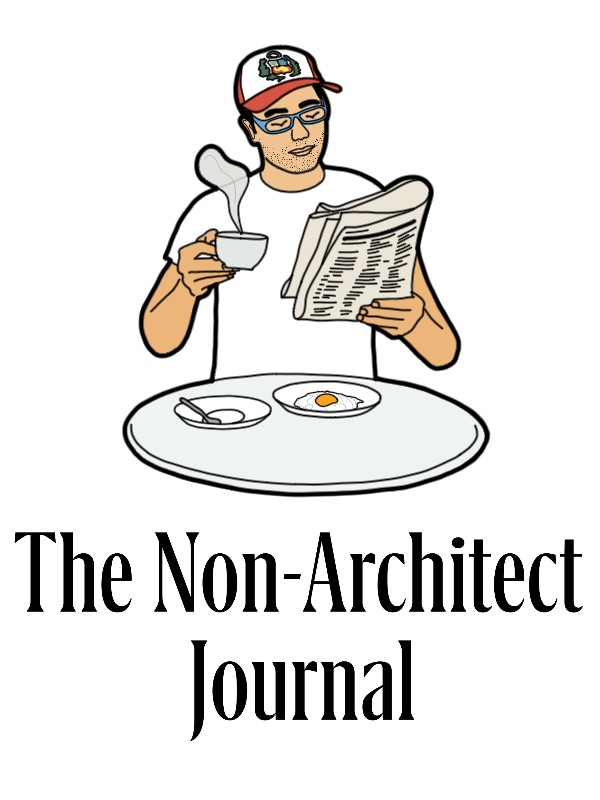The Kitchen That Couldn’t Fit Two
When Diego and Clara remodeled their kitchen, they imagined cooking together every weekend, him making fresh pasta at the island while she prepped sauces by the stove. The vision was cozy, romantic, and full of clinking pans and laughter.
But… once the remodel was done, reality set in. With just 36 inches between the island and the counters, the first cooking session turned into an awkward dance. Every time Clara opened a drawer, Diego had to sidestep. If one was at the fridge, the other was trapped. Passing behind each other meant one had to stop what they were doing completely.
The kitchen looked perfect… but it couldn’t handle two people at once.

Therefore… they realized that designing for how you live, not just how a space looks, is what makes a kitchen truly work. The right clearances aren’t about code; they’re about comfort, efficiency, and keeping relationships intact when dinner’s running late.
Why “Two-Cook” Kitchens Need More Room
Kitchens with only one cook can function with less clearance. But if you want to share the space — whether with a partner, a friend, or your kids — you need 42–48 inches between work areas so people can pass, open appliances, and prep without collisions.

The Cost of Ignoring It
- Constant “excuse me” moments that slow everything down.
- Frustration that turns cooking from fun to stressful.
Avoiding cooking together altogether — and losing the moments you designed the space for.
How to Avoid the “Romantic Vision, Awkward Reality” Problem
- Map your busiest kitchen moments: holiday dinners, Sunday meal prep, or casual cooking with friends.
- Simulate the layout with tape on the floor before committing.
- Think about teamwork flow: can one person be at the stove while another uses the fridge without getting stuck?

Your Shortcut to Kitchens That Work for Real Life
I created the Graphic Guide to Residential Design so you can get the right dimensions and the right flow — before you spend a dime on cabinets or counters. It’s packed with illustrations that make planning easy, whether you’re designing for one cook or a whole family.

